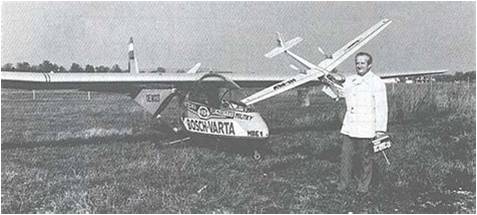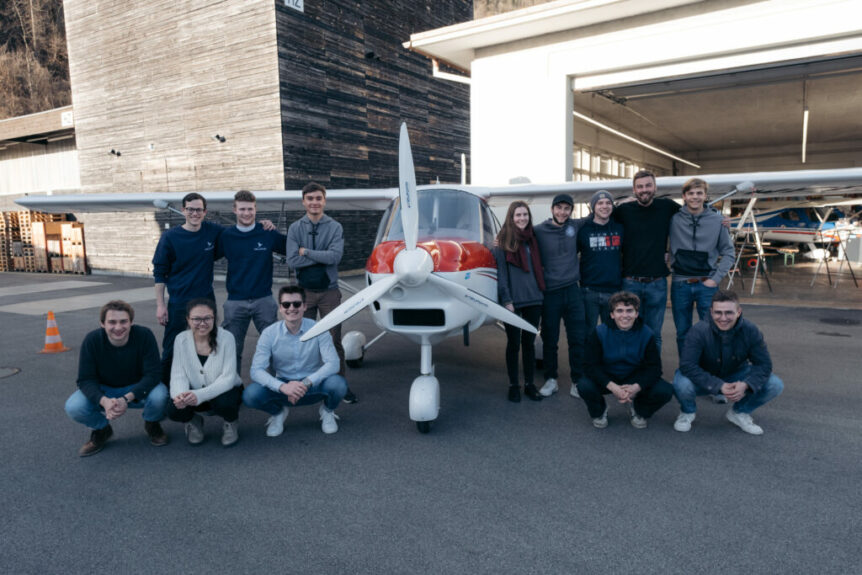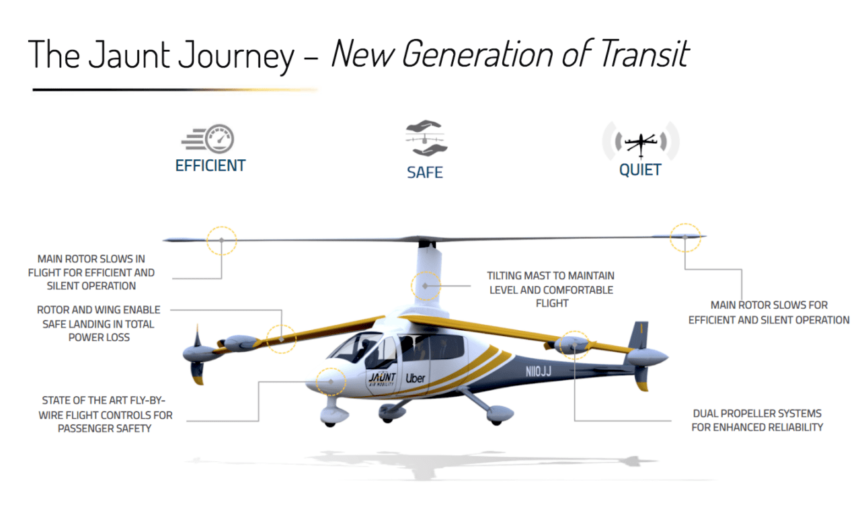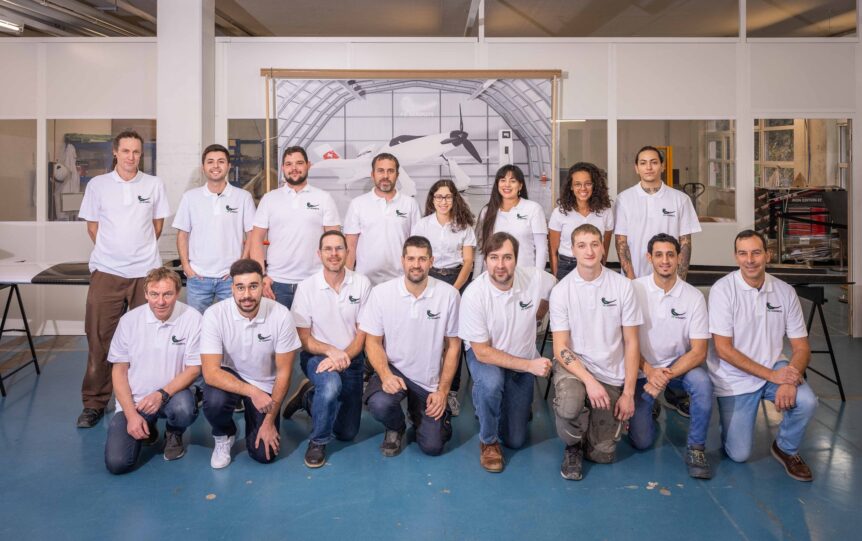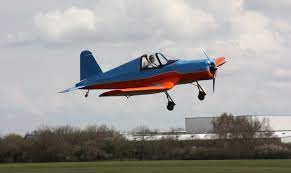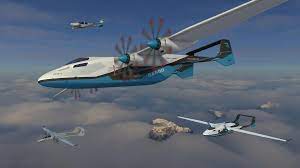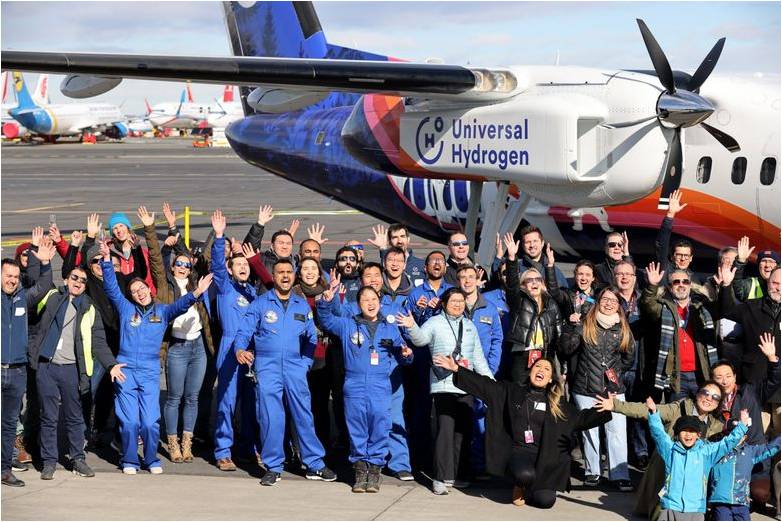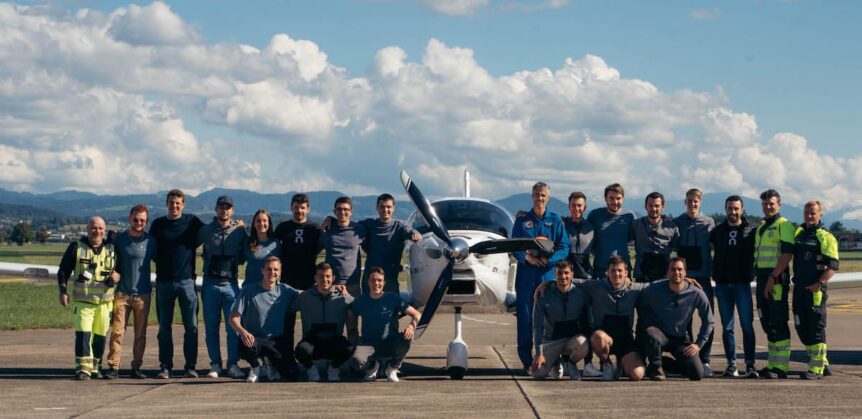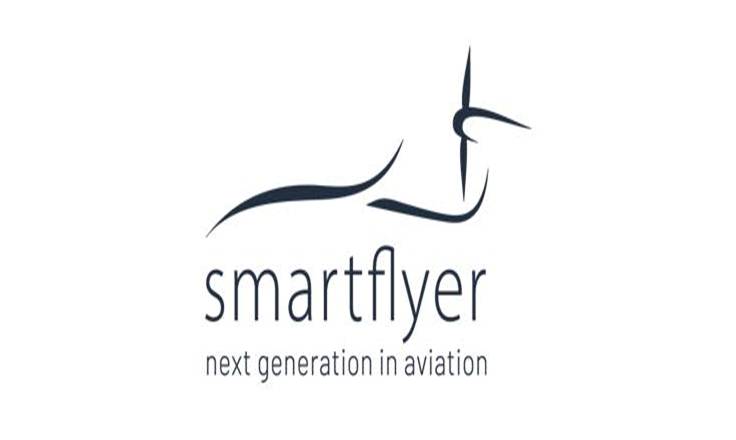On this electric 50th anniversary of a notable achievement in the aircraft world, Dr. Reinhard Lernbeiss, a fellow in the Royal Aeronautical Society is a pilot on Boeing 777s and Airbus A330s, 350s, and 320s. He recently alerted us on LinkedIn that on October 21, 1973, Heino Brditschka was the first to fly a heavier-than-air craft on electric power. (The Tissandier Brothers had flown an electric airship in 1883, followed by Captains Reynaud and Krebs in 1884.) His converted HB-3/MB-E1 (his own design) managed a first flight time of nine minutes, fifty-eight seconds and reached an altitude of 985 feet above ground level. Lernbeiss reports that on additional flights, the craft managed 12, 16, and 22 minutes and an altitude of 1,245 feet. These included go-arounds, with each outing “far below the capacity of the battery on each flight.” Much of the inspiration for the flight came from an aeromodeller, Fred Militky. A 2018 Federation Aéronautique Internationale (FAI) publication, CIAM …
The Cellsius AC4 Hydrogen Project
The Cellsius AC4 Lightwing is a capable microlight aircraft popular in Europe. As part of a project to clean up aviation, it will fly on hydrogen, and for good distances if students at ETH Zurich* are successful in their project. Students are modifying a Lightwing to run on pressurized H2, and crafting motor, fuel system, tanks, power electronics, and battery backup system to make a coordinated, custom-fitted craft. It will stay aloft for two hours and emit nothing but water vapor. The project’s web site spells out the students’ ambitions. “Our powertrain consists of many components that together can get an aircraft into the air. “To make this a reality, we develop the majority of our components ourselves, tailored to our requirements.” Components include a radial-flux motor, unusual in that most electric aircraft motors are axial flux. Students worked with e+a (Elektromaschinen und Antriebe) AG to design and construct the unit. With that motor, students helped design a matching inverter …
Jaunt Journey – Maybe the Most Unique eVTOL
The Jaunt Journey may be the most unique eVTOL (electric Vertical Take Off and Landing) machine coming to market, and it relies on something old and several things new for its advanced take on Advanced Air Mobility (AAM). What makes it special is its combining autogiro-like technology with electric power and some different approaches to the transitions between vertical and horizontal flight. Jaunt promises to carry a pilot and four passengers 80 to 120 miles, pushing it into the realm of regional air mobility. It can top out at 175 miles per hour, or about the upper limits of most helicopters while pressing down with only 55 dBa of sound pressure, considerably below that of any helicopter. Its performance and several distinguishing features make it all the more unique. Somewhat Like an Autogiro Autogiros were pre-helicopter rotary-wing aircraft that could lift off and alight quickly because of a large, usually un-driven, series of blades above the fuselage. Note how easily …
Pie in the Swiss Sky
Pie Aeronefs is a small firm in Switzerland, specializing in battery-powered aviation, and close to flying its single-seat air racer, the UR-1 Devil. We reported on this machine in 2021 at an early stage in its development, and now it’s going to be available as a kitplane. Adding to a bumper crop, their UG-2 Bullfinch will also be available as a kit. Pronouncing that their aircraft are all zero-emissions machines, Swiss made, and innovative, Pie Aeronefs has this manifesto on its home page: “Pie Aeronefs is a Swiss all-electric aircraft manufacturer. “Through distributed electric propulsion, our zero carbon emitting airplanes shall surpass the performance of conventionally powered competitors. “Thanks to an innovative design, our aircraft are optimized for the electric energy system.” UR-1 Devil Supplied as a kit that the company says can be completed in 800 hours, the racer features carbon, aluminum, wood and electronics components, and “access to all technical data and assembly diagrams.” Customers have to supply …
Light Electric Aircraft at Aero Expo
Three companies presented electric versions of their light electric aircraft at Friedrichshafen, Germany this year. From a WWII replica to a high- and low-wing pair of Part 103-compliant craft, to a very modern trainer, the three represent increasing sophistication in light aircraft. Elektra Trainer Dr. Birgit Weissenbach shared that as the only approved electric aircraft in its class, the Elektra Trainer also gained Aero Expo’s Innovation Award 2023 from Aerokurier. We’ve described the technical details of the airplane in a February entry about its certification, and highlighted its development through many other entries. Dr. Wiessenbach noted,“What is particularly pleasing is that this year’s reader award was drawn not only among electric aircraft, of which there are currently not that many, but in the much larger category engine and electric aircraft. Its promised “2.5 hours of safe flight,” validated noise level of 48 dBa, and relatively easy one-person assembly all add up to a functional, useful trainer that can lower …
APUS Offers Two Hydrogen-powered Aircraft
Designs to Fly “Without Harm for the Climate” APUS (Latin for swift bird) has announced two aircraft, the i-2 and i-5, that will offer either zero emission or very low emission flight. The designs represent some highly innovative thinking and excellent performance. APUS states its mission as, “Flying without any Harm for Climate!” To that end, they are developing four craft that will fly on green hydrogen power. Partnered with, “PowerCell (Hydrogen Fuel Cells), Fraunhofer (High-Voltage applications), COTESA (hydrogen storage solutions) and HEGGEMANN (hydrogen supply and safety systems) we are developing certified powertrain units for emission-free air transportation applications.” APUS i-2, Zero-Emission General Aviation Aircraft In a recent discussion with CEO Dipl.-Ing.Phillip Scheffel; Laurent Altenberger ,an Aerospace Project and Supply Chain Management Consultant in Business Development; and Dipl.-Ing. Robert Adam, a company co-founder and head of powertrain development, your editor learned how committed APUS is in the matter of promoting environmentally friendly flight. APUS itself goes back to the 2011 …
Biggest yet from Universal Hydrogen
Universal Hydrogen flew the largest hydrogen-powered aircraft yet at Grant County Airport in Moses Lake, Washington. The DeHavilland Dash 8 was powered on its right side by a MagniX motor and fueled by H2 from a pair of containers in the rear of the fuselage. It made a 15 minute flight to 3,500 feet and settled back to a safe landing It carried “the largest hydrogen fuel cell ever to power an aircraft, “and Universal Hydrogen co-founder and CEO Paul Eremenko “declared the moment the dawn of a new golden age of aviation.” Prep for flight Lightning McClean, Universal’s modified Dash 8, normally flies with up to 50 passengers. The penalty for using H2 for fuel is giving up 10 of those revenue-producing seats, Universal’s Plug Power containers taking up the back rows of the cabin. Other gear included a rigorous evaluation of every component and system, the Dash 8 was ready for taxiing and test flights. Two large hydrogen …
AeroDelft and ETH Cellsius’ Future Flies in Clean Skies
Two groups of students, AeroDelft in The Netherlands and ETH Cellsius in Switzerland, are making great progress on some extremely advanced aeronautical projects. Each school’s ultimate goal seems to be flying with liquid hydrogen, and each has a slightly different approach to that goal. AeroDelft: Starting Small AeroDelft, the student-led project at Delft University of Technology, flew a 1/3 scale model that closely resembles e-Genius in July. Its 1,500 Watt (two kilowatt) motor is powered by 40 grams (1.411 ounces) of gaseous hydrogen initially, but will transition to liquid H2 later in the program. 380 grams (13.4 ounces) of the more potent fuel will allow three hours endurance and a range of almost 300 kilometers (186 miles) Since that flight, the team has exhibited at various trade shows and advanced work on its Sling 4 two-seat light aircraft. The 920 kilogram (2,024 pound) maximum takeoff weight aircraft, powered by a 110 kilowatt (147.4 horsepower) motor flies on battery power for …
Smartflyer Moves, Along with Former Namesake Fly-in
Smartflyer is a four-passenger, proof-of-concept light aircraft that can fly on pure electric power, as a hybrid with an av-gas powered generator, or as a hydrogen-fuel-cell-driven airplane. It’s been under development for several years, but is moving production to Stelzach – just nearby. Likewise, the Smartflyer Challenge, an electric aircraft fly-in, is moving from Smartflyer’s Grenchen, Switzerland home to Bern, a much larger field about 20 miles south. The Smartflyer SFX1 Electric-Flight.eu reports, “The fuselage of the Smartflyer SFX1 is slowly taking shape.” Company founder Rolf Stuber OK’d production of the first carbon fiber reinforced plastic (CFRP) fuselage at Aerolite near Lucerne. In a rented hall of 500 square meters (5,382 square feet), the “ready-to-install” drivetrain, consisting of a well-tested Rotax 914 engine coupled to a YASA generator, workers will assemble the major components. The SFX1, due to fly next year, has the following specifications: Cruise Speed: 120 knots / 222 km/h (138 mph) Take off Power: 160 kilowatts (214.5 …
Sonex and Gabriel DeVault Partner on Electric Kitplane
Sonex and Gabriel DeVault have partnered to create an electric kitplane, marketing components for a different type of powerplant. Sonex has been in the kitplane business since 1998 (having built from a decade’s-old earlier company) and Gabriel DeVault has been working with the electrification of aircraft for a decade. Combining their expertise, we have a kit built path toward an inexpensive electric kitplane. Gabriel commutes a lot by air, traversing the globe between his home in Watsonville, California and Cranfield, England for work on Zero Avia’s electrification of Dornier 228s – one in each country. He flies between Watsonville and Hollister, California in his Zero Motorcycle powered eXenos, a kit built product from Sonex Aircraft in Oshkosh, Wisconsin. Before that, he flew a Mark Beierle eGull powered with a Zero motor. Gabriel was instrumental in the design and manufacturing of that motor, making him a bona fide expert on the powerplant. His experience with the eXenos has led Sonex to …

